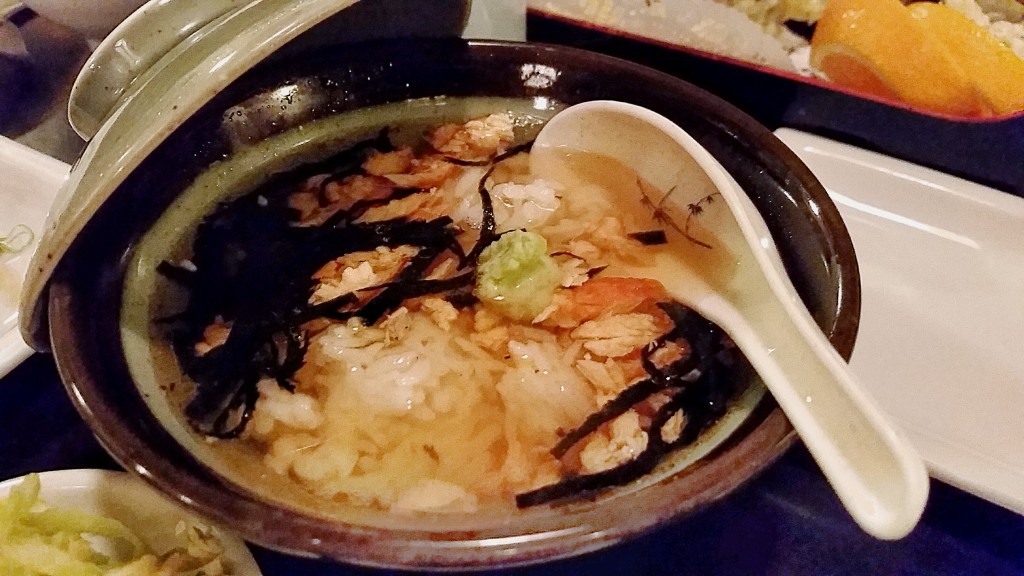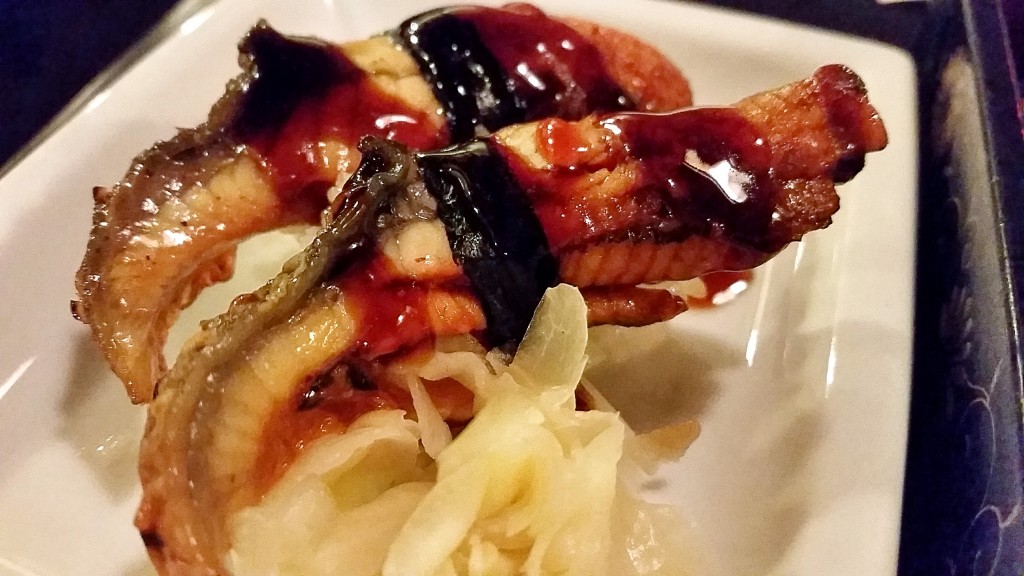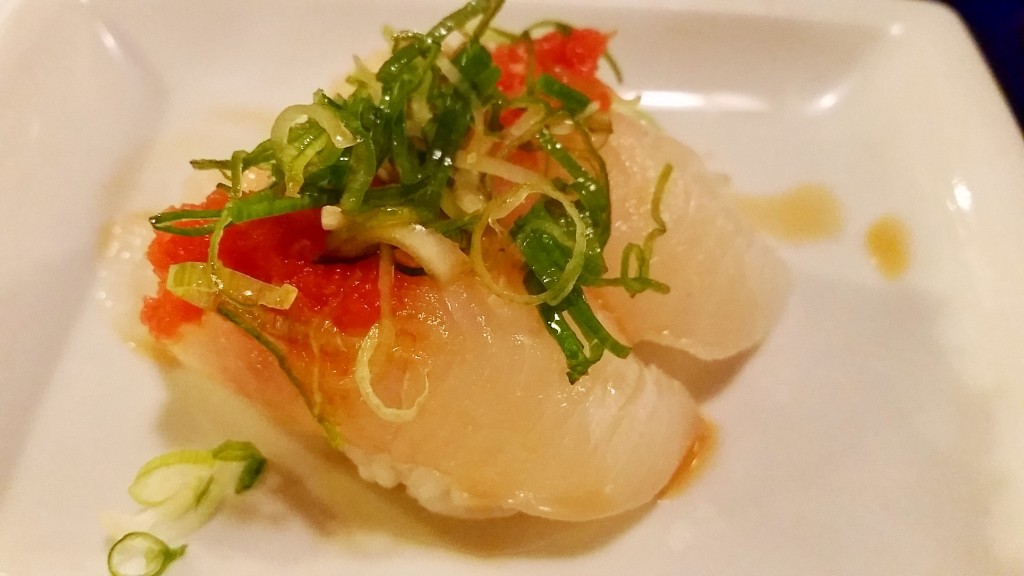A little history lesson for ya: The idea of sushi actually originated in China. Since most of China is not near an ocean, transporting raw fish meant coming up with some ingenious preservation ideas. Thus, the Chinese thought of packing the fish in barrels of fermented, vinegar-soaked rice, which they scrapped later after curing the fish.
The Japanese then took inspiration from that idea and added their own twist, where they combined both fish and specially cooked rice to create a simple but delicious snack. Obviously this was a great idea. Now, raw fish is a delicacy worth spending good money on because of the superior fish and rice quality. Study this guide so next time you pick up a sushi menu, you know what you are about to drop your money on.
SAFE
If fish doesn’t interest you too much, but you’d like some great options.

Photo by Eunice Choi
Ochazuke: Ochazuke consists of hot tea poured over rice with added ingredients such as dried seaweed strips, salmon and spicy green wasabi. Although it’s not sushi, ochazuke is perfect if you’re craving something light and brothy. The Japanese had these as late night meals or snacks because they’re so easy to prepare.
Bento Boxes: These are easily recognized and liked for their variety of foods served in a compact, boxy container. Salmon, chicken or beef teriyaki are usually offered as the main entree and typically served alongside rice, vegetables, tempura and California rolls. This is a great way to experiment with different flavors and get a little taste of everything. If you’re lucky, a small cup of green tea or red bean ice cream might be thrown into the combo.
Tamago (Egg): This is hardly considered sushi, in the sense that this is not raw fish, but actually a slice of Japanese omelette. It is rather sweet in flavor, and it’s undeniably delicious.
California Roll: The name alone lets you know this is definitely a safe choice. California rolls usually consist of cucumber, crab meat or imitation crab, and avocado.
TRADITIONAL
For some familiar and simple, fresh tastes.
Tip: Have some ginger in between pieces to cleanse your palate.

Photo by Eunice Choi
Unagi (Freshwater Eel): This is a great choice for those who like a sweet flavor and their seafood cooked. Unagi has a chewy yet tender texture with a lightly sweet sauce drizzled on top.
Sake (Salmon): Salmon has a rich, buttery flavor due to the fish’s natural oiliness. The slices tend to be thick and practically melt in your mouth.
Ebi (Shrimp): Another choice that is familiar, shrimp is somewhat bland compared to many existing options. While I personally don’t recommend paying for this unless you order a bento box or larger meal that already includes ebi, it never hurts to revisit something everyone knows about.
Maguro (Tuna): Tuna has a clean and mild taste that works well with the wasabi in your soy sauce and/or laid in between the fish and rice.
Hamachi (Yellowtail): While yellowfish has a robust flavor with a somewhat firm texture relative to tuna.
ADVENTUROUS
For unique experiences or flavor twists added.

Photo by Eunice Choi
Hirame (Halibut) with ponzu sauce: Halibut itself is a fantastically meaty fish, with a light flavor that many people like. That’s why you should request ponzu sauce on top, which adds a sour and refreshing tang to the sushi.
Uni (Sea Urchin): Sea urchin might be the most unusual tasting choice out of all. It has a unique taste and is not a slice of fish, but almost paste, wrapped up in nori (dried seaweed). Sea urchin has a briny, creamy and slightly sweet flavor that’s hard to stomach for some, especially if trying it for the first time. Without a doubt, it’s an acquired taste for most, but don’t let that deter you because it is truly a delicacy.
Toro (Fatty Tuna): Fatty tuna is notorious for its extremely high price compared to other sushi, starting at $12 to $15 for two pieces at the average sushi joint. But because it has a wonderfully rich and robust flavor, with melt-in-your mouth fattiness, it’s worth a few extra bucks.
Ika (Squid): Squid is familiar, but its rubbery and tad bit slimy texture can be surprising. Nevertheless, it is worth chewing your way through for its sweet flavor.

